I’m in Varese at the home of MV Agusta as a guest of the Italian marque and its new partner KTM. As the only Australian media outlet on the global guest list, I’m here to listen to the fanfare Pierer Industries wants to trumpet about its most recent acquisition (AMCN Vol 73 No 02), get a guided tour through both the historic production facility and the impressive museum (stay tuned for those), but the thing I’m most excited about is the range of bikes the marque has rolled out for me to test.

With two days and a smorgasbord of some jaw-dropping Italian tarmac that, from what I could tell, was devoid of Italian Carabinieri, it was just me, the scenery and these four exotic beauties.

Brutal truth – 2023 Brutale 1000 RR
The range-topping Brutale is next-level madness
I’m sure you’ll agree the Brutale RR looks spectacular. But pictures don’t do this bike – or any other MV for that matter – justice. In the flesh, the Brutale is beautiful. From the overall look to the splashes of raw carbon parts, there’s that tail, the four-exit exhaust… and that billet alloy dash mount. The Brutale really is a rolling piece of art.
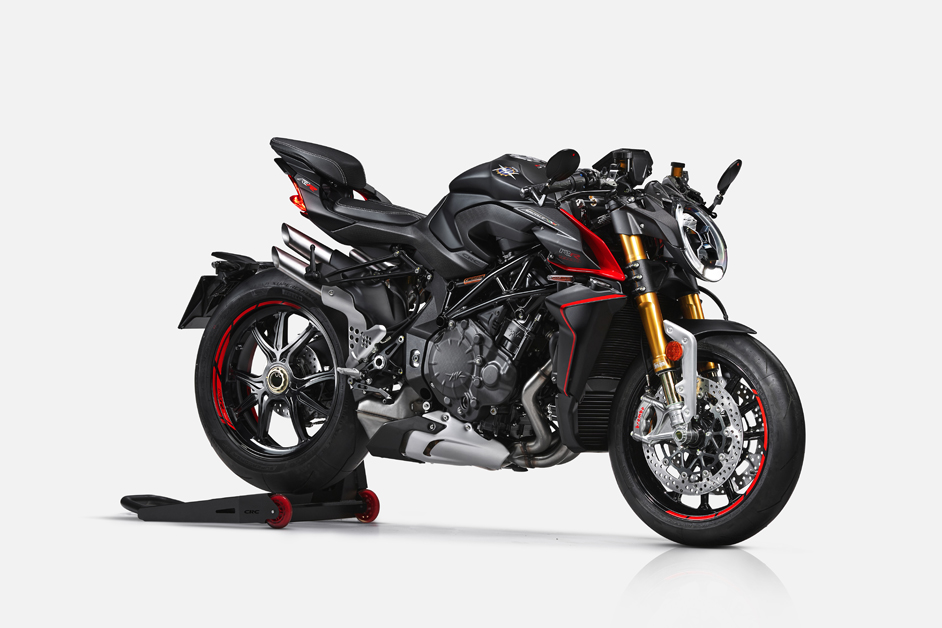
Gone are the days when owning a nakedbike meant compromises in comfort and performance. Weapons like the Streetfighter V4, Super Duke R and MT-10 offer sportsbike performance with ergonomics that don’t require a chiropractor.
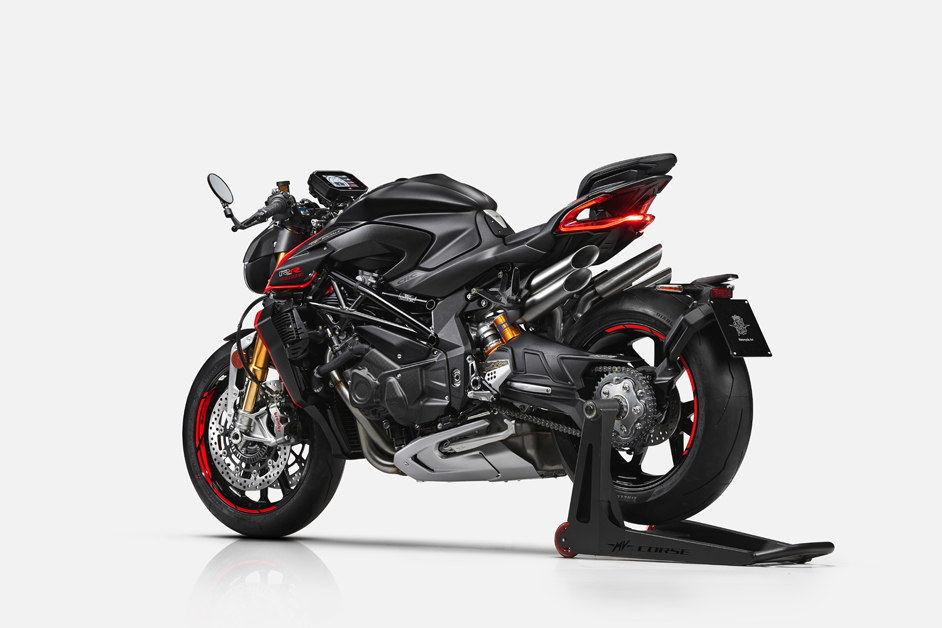
I made a beeline for the Brutale 1000 RR first thing, drawn to the 153kW (208hp) four-cylinder big hitter. But half an hour into the ride, I was questioning my decision – turns out that beautiful form was well and truly prioritised over comfortable functionality.
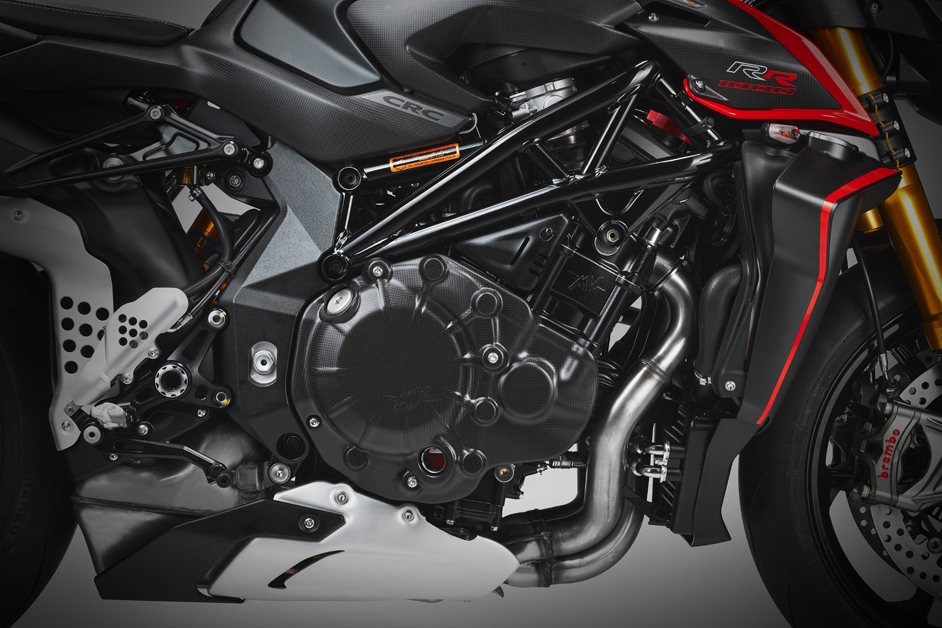
I’m larger and taller than the average rider, and I found the Brutale’s aggressive riding position way too cramped for my 186cm frame. The smaller riders didn’t suffer as much as me, but after an hour riding it through the hills, I was ready to step off it.
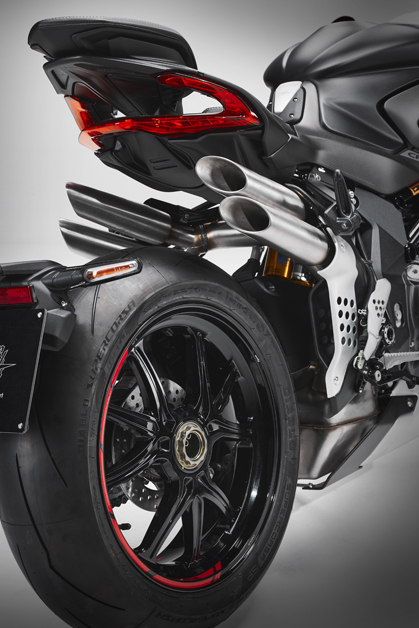
But not before I revelled in its sublime inline-four cylinder engine. The way it gets down to the business makes the Brutale RR one of the most insane motorcycles I’ve ever ridden. This is no refined Japanese-style four-banger: it howls with anger, trumpets induction roar at you and quite frankly can scare the excrement out of you with its outright power.

It’s somewhat of a pussycat down low, so you can tootle around if you must, but why would you? The Brutale feeds off revs: by 5000rpm things are getting interesting, and by 8000rpm you’re holding on for dear life. My helmet was attempting to pull my chin over my forehead, my vision blurred and the world became a colourful streak of assorted unidentifiable images. There’s a quickshifter so you can bang through the six-speed gearbox allowing you to do speeds in an instant that will suspend your riding privileges and probably send you to jail if one of the blurs in your peripheral is the law.
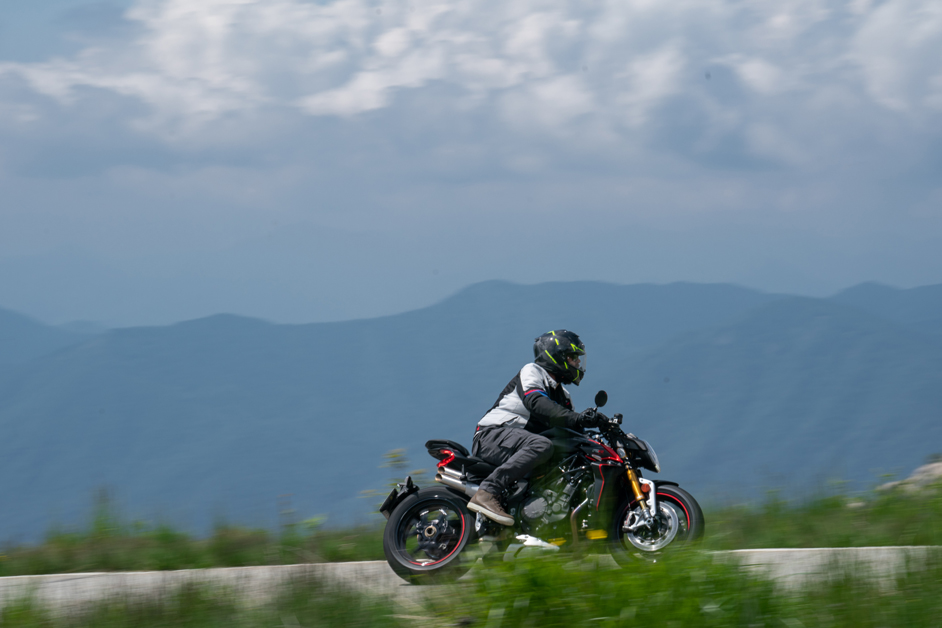
As there should be on a $64k motorcycle, there is a full suite of electronic aids. Traction control with eight levels of intervention, throttle control, rear wheel torque control, wheelie control, launch control, cornering ABS and more. Keeping the Brutale on rails – and it is on rails – is an electronically adjustable semi-active Öhlins suspension package that’s as beautiful as it is brilliant. Coupled to this via the IMU is an electronically controlled and adjustable Öhlins steering damper all of which stiffen or relax the setting depending on which riding mode you’ve selected. Alternatively, you can slip into the TFT dash and customise the settings yourself.

The Brutale’s 186kg claimed dry weight is pulled up by top-shelf Brembo kit and is flawless for road riding, even at insane speeds. On the track, where the Brutale would be equally at home, perhaps you could find the limits of the stoppers, but you certainly won’t on a public road.

MV claims a fuel consumption figure of 6.8L/100km, and with a 16-litre tank, that should get you… wait, who even cares!? The Brutale isn’t about how far down the road you can get: it’s about how fast you get there. The name says it all. The Brutale is brutal in everything it does: brutally fast, brutally gorgeous, brutally priced and, for tall folk, brutally uncomfortable.
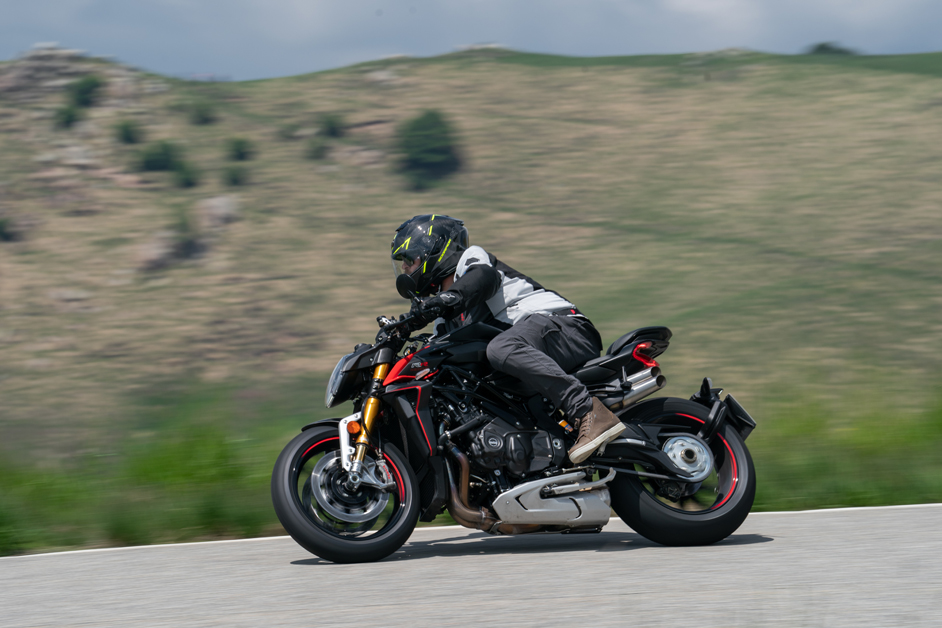
If you must have the fastest, most gorgeous piece of nakedbike kit sitting in your shed then the Brutale fits the bill. Even if you can never hope to afford one, a test ride should be on your bucket list just for the sheer madness of the whole experience.
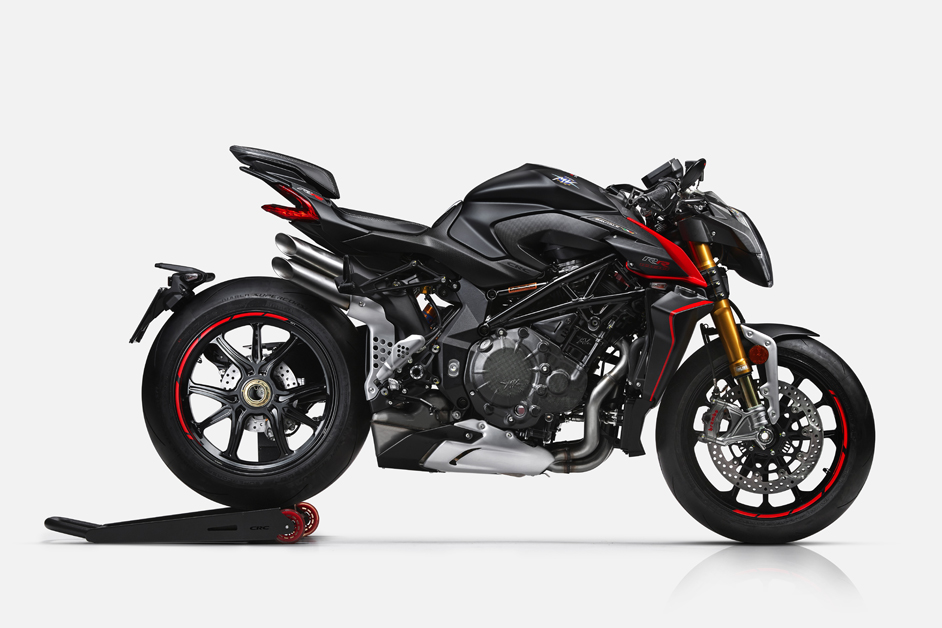
Giz a Drag – 2023 Dragster 800 RR SCS
Minimalist styling and a soundtrack to boot
As much as I adored the insanity of the Brutale RR, I enjoyed riding the Dragster more than any of the other three MVs. The 798cc triple doesn’t demand the focus or fear of the Brutale’s inline-four, so for a normal human, the 103kW (140hp) and 87Nm of torque available is far less daunting and far more usable. This meant I could be more focused on enjoying the ride rather than being all consumed by insane power.

That’s not to say the Dragster is slow – 140hp in a package with a claimed dry weight of just 175kg is never going to be labelled as slow. There’s plenty of squirt across the rev range, but like the Brutale the Dragster loves to rev – and the midrange to top-end sector of the tacho is where exhilaration lives.

The Dragster’s engine has the same raw and raucous feel and soundtrack as the Brutale, but the note emitted from the exhaust is just that bit sweeter thanks to the three-cylinder engine. Hearing a Dragster coming through the hills on the pipe really is something special.

The Dragster runs a six-speed gearbox with slipper function and two-way quickshifter. But interestingly it uses MV’s Smart Clutch System (SCS). The system works like a centrifugal affair and allows you to take off without the clutch. You simply pull in the clutch at start-up, click the Dragster into gear, release the clutch fully and then you’re ready. Twist the throttle and away you go. You still need to shift up and down, but with the quickshift function there’s no need to touch the clutch at all. It takes a while to get used to, but once you come to terms with the tech, you wonder why more manufacturers don’t use it. It doesn’t take away from the tactile experience of banging through the gears and makes more sense to me than automatic gearboxes on a motorcycle.
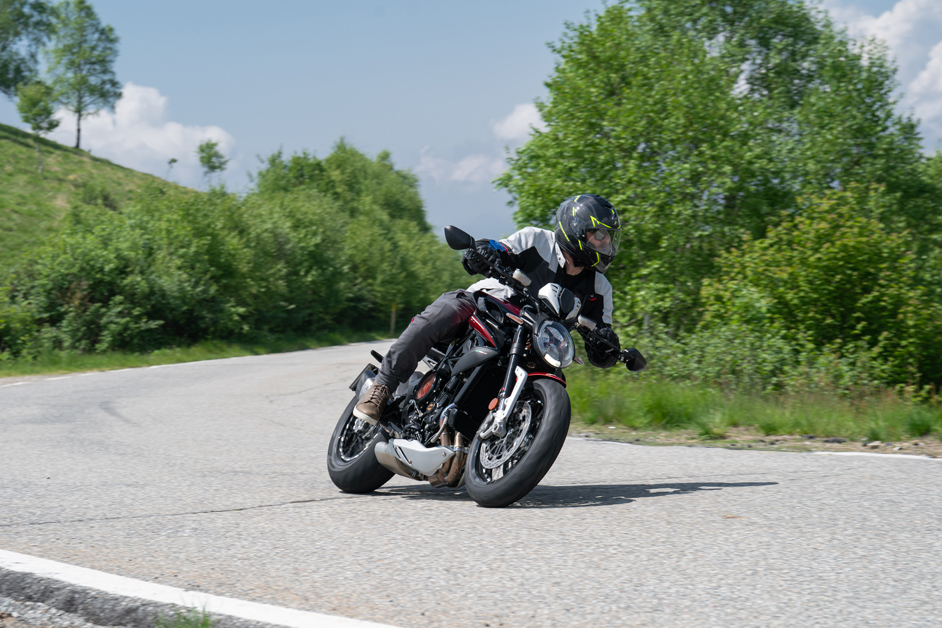
The Dragster gets fully adjustable suspension – a 43mm Marzocchi fork and Sachs shock – and while it lacks the refinement and semi-active control of the Brutale’s Öhlins kit, it’s still damn good. For my weight the factory settings are spot on for road riding speeds that range from cruising to crazy, and there’s a manually adjustable steering damper. Braking duties are covered by Brembo and both ends are nigh-on perfect. There’s monster power, and enough feel through the radial levers that you can sense the tyres grip on the world before the ABS has a chance to kick in.
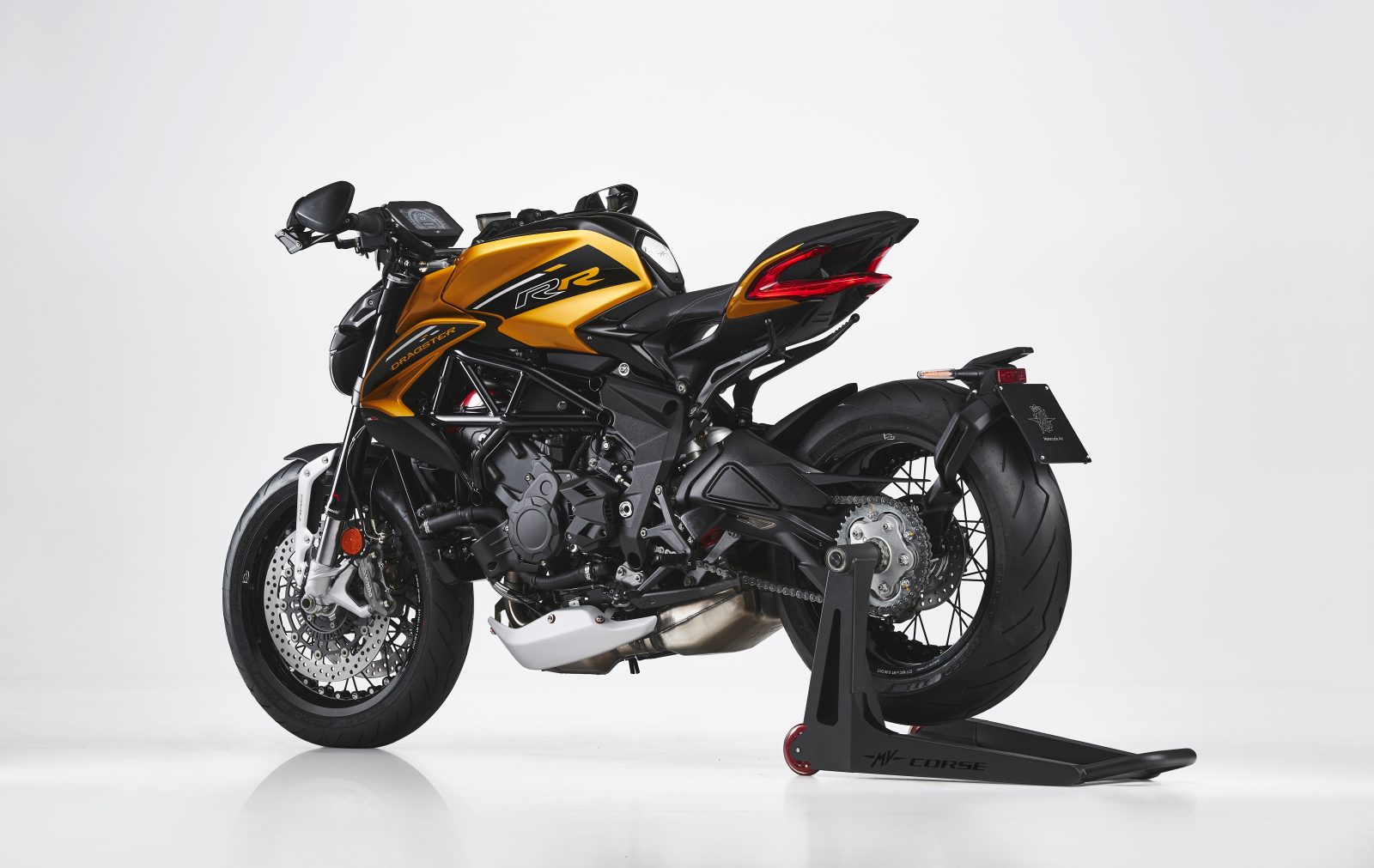
There are three reasons why the Dragster is a better proposition for most riders than the Brutale will ever be. Firstly, its usable power, secondly, it’s $26,000 less expensive and, lastly, it’s infinitely more comfortable. The ’bar is
more upright so the riding position is less aggressive and ripping out solid miles is doable in relative comfort.
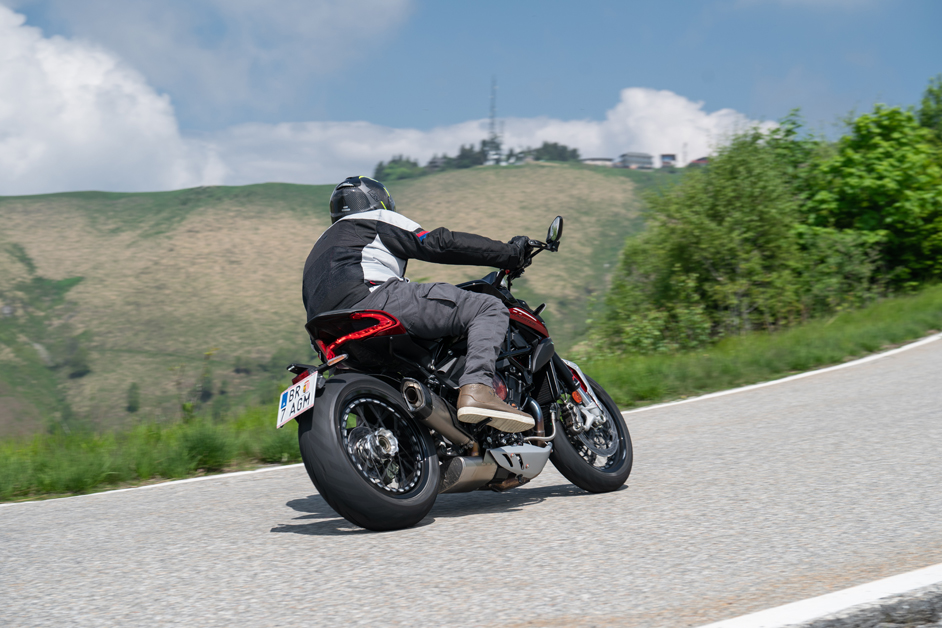
You don’t lose much gadgetry for your $26k saving, either. There’s cornering ABS and traction control, wheelie control, launch control, torque control, power modes, ride modes, cruise control and the TFT dash features Bluetooth connectivity. The Dragster is typically MV in its sexiness and the attention to detail committed to it. The three-exit exhaust alone is art, and the spoked wheels and tail are all sorts of desirable.
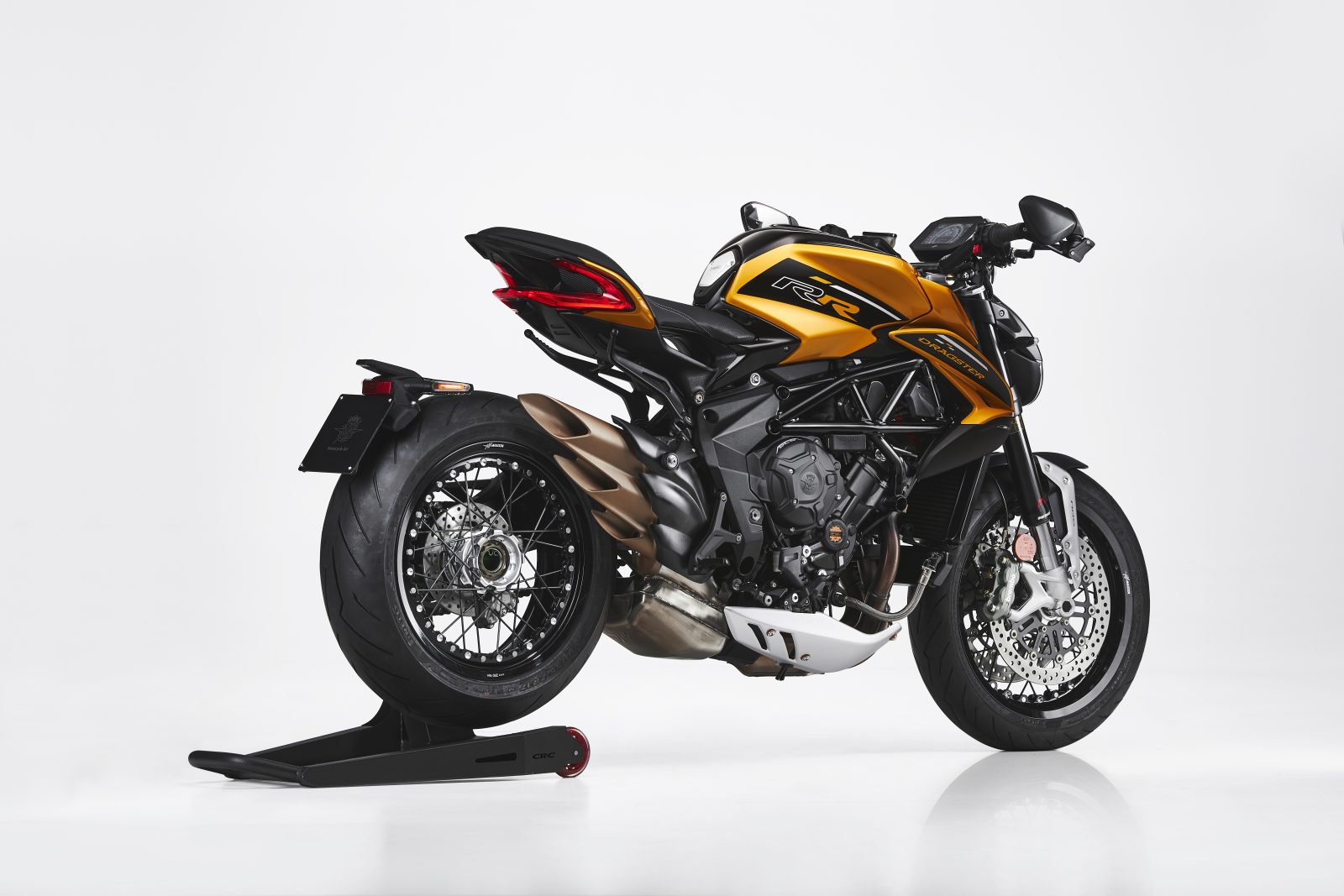
It feels raw and angry, but it won’t scare you and, unless you’re Marcos Ramirez, I guarantee you’ll be quicker on the Dragster than on the Brutale – don’t let your ego get the better of you.
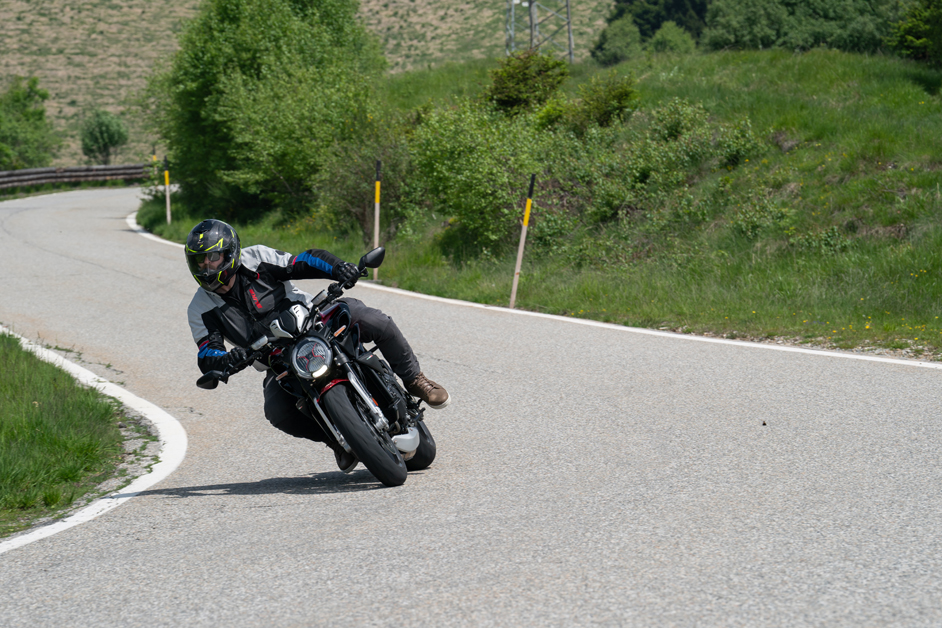
At $38k, it’s still far from cheap and that got me thinking about the other offerings. Looks and craftsmanship aside, I can’t say I’ve had less fun riding KTM’s $19,840 890 Duke R or Ducati’s $23,300 Monster SP. But I understand the look of a bike can be just as important as how fun it is to ride and the Dragster can’t be compared to the KTM and Ducati because the quality and workmanship is second to none.
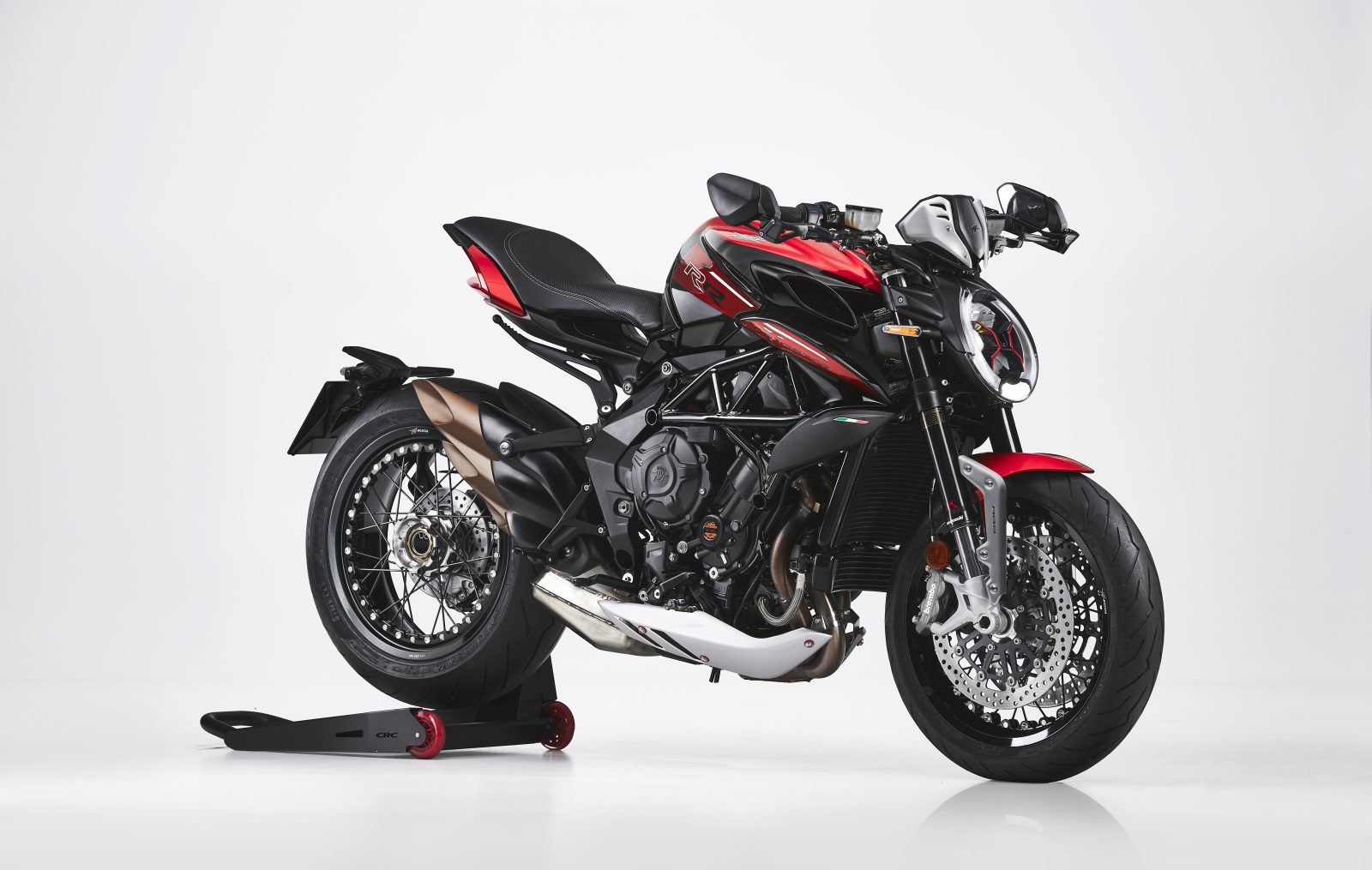
Retro focus – 2023 Superveloce 800
Channel your Giacomo Agostini with this hard-edged retro
Take the engine from the MV Agusta F3 800 sportsbike and stick it in one of the most unique and arguably best-looking motorcycles ever made and you have yourself a Superveloce.
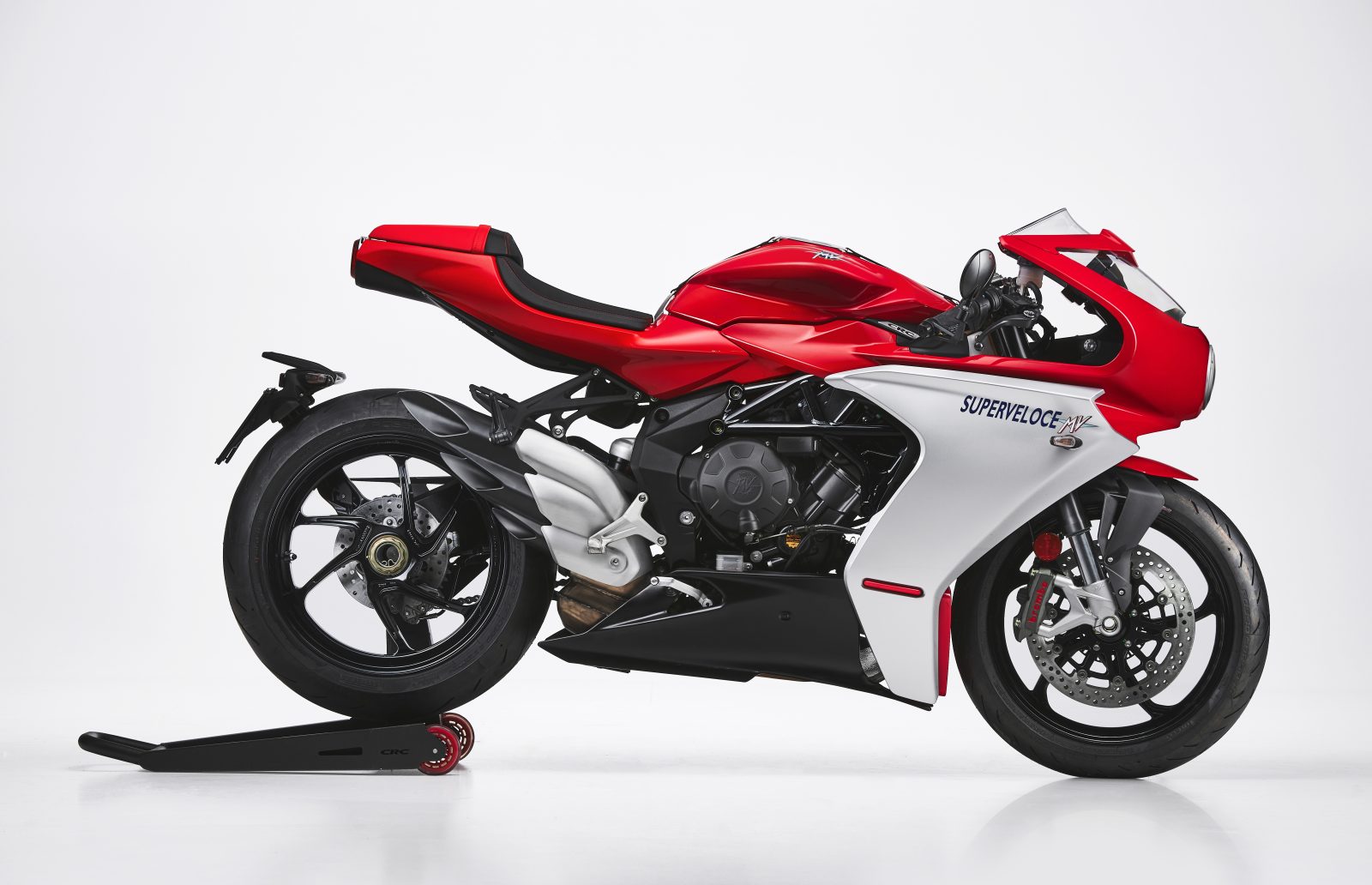
So beautiful and interesting do I find the Superveloce I was so looking forward to riding it – but after seeing it in the flesh I had concerns about how I might fit on it! I had visions of a beanbag draped over a pushbike… but my desire got the better of me and, yes, I’m far too big to own a Superveloce but it doesn’t mean I didn’t love riding it.
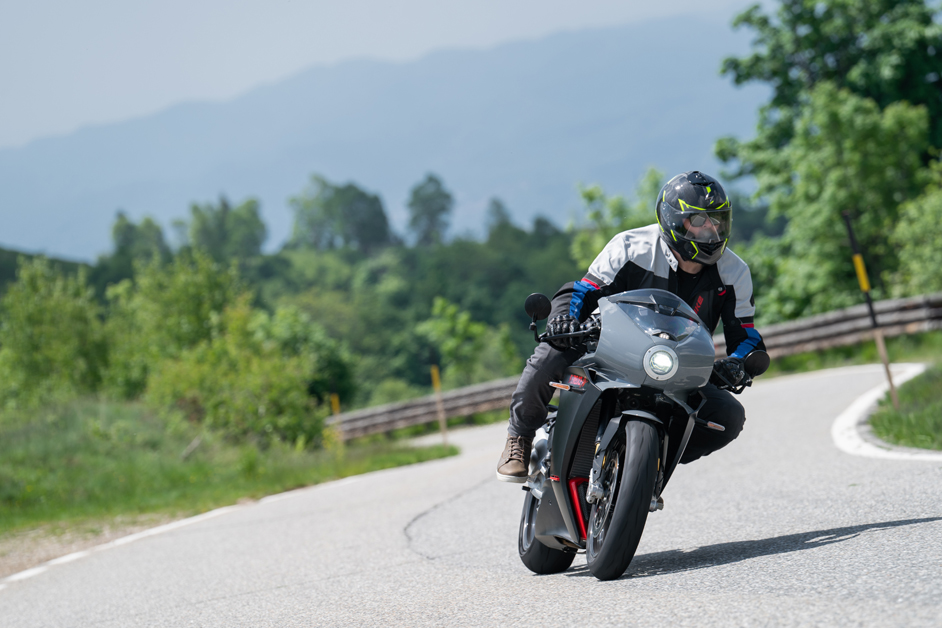
The compact cockpit, clip-on ’bars, plank-like seat and high ’pegs ensured that my time on the bike was as uncomfortable as possible, but the design and attention to detail are top notch, from the luscious paint to the leather tank strap and everywhere in between. There’s nothing on the Superveloce that looks like an afterthought or isn’t supposed to be there.
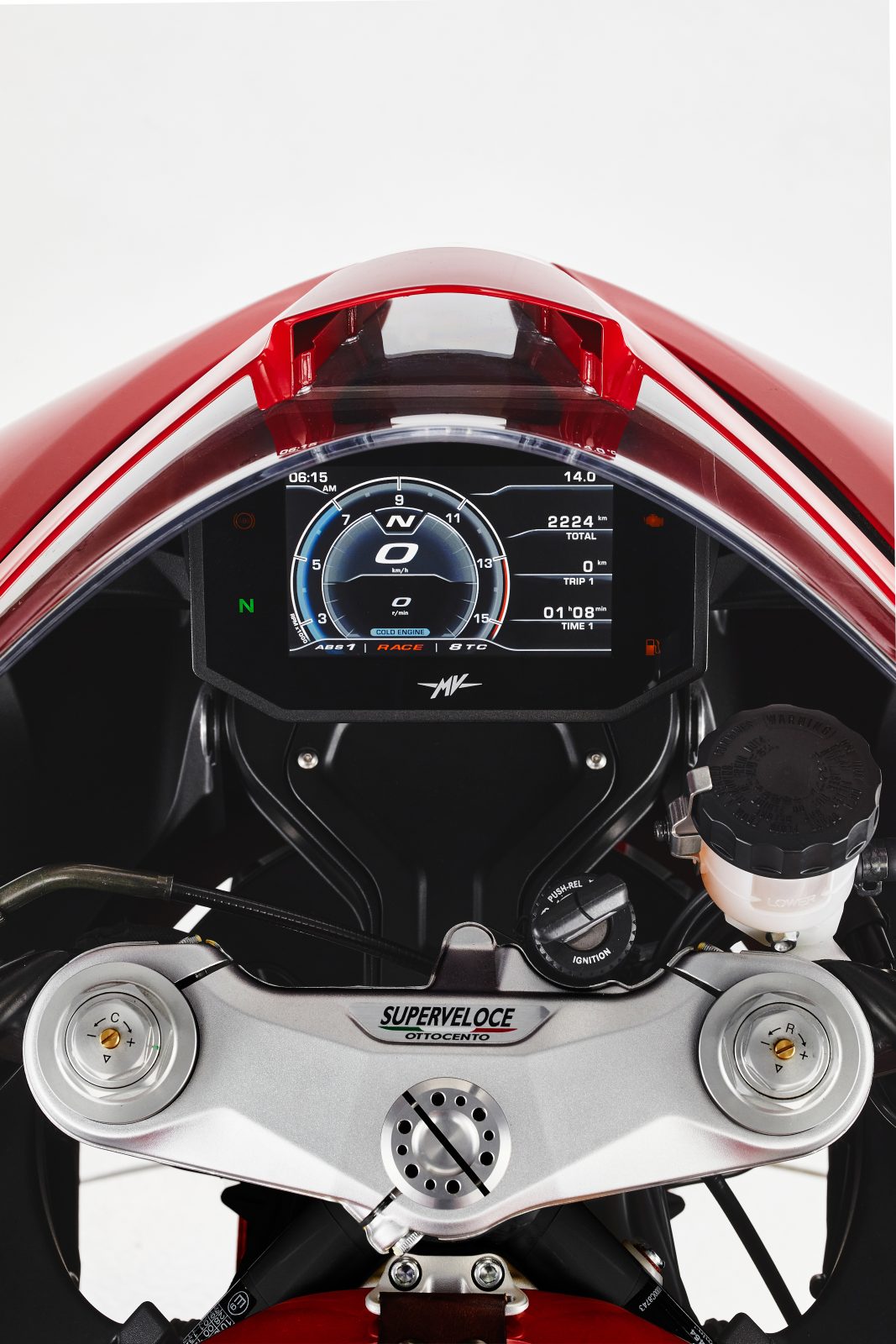
Under the exterior the Superveloce is powered by the same 798cc three-cylinder engine as the F3 and Dragster, meaning it comes with the same glorious soundtrack. The Superveloce makes a tad more power and torque than the Dragster but a little less than the F3, and has 108kW (147hp) available at 13,000rpm and 88Nm at 10,100rpm on tap. Everything interesting happens in the mid to high rev range, which is just fine because if you’re riding a Superveloce you’re not cruising: you’re going hell for leather. Because this is a sportsbike in pretty clothing.
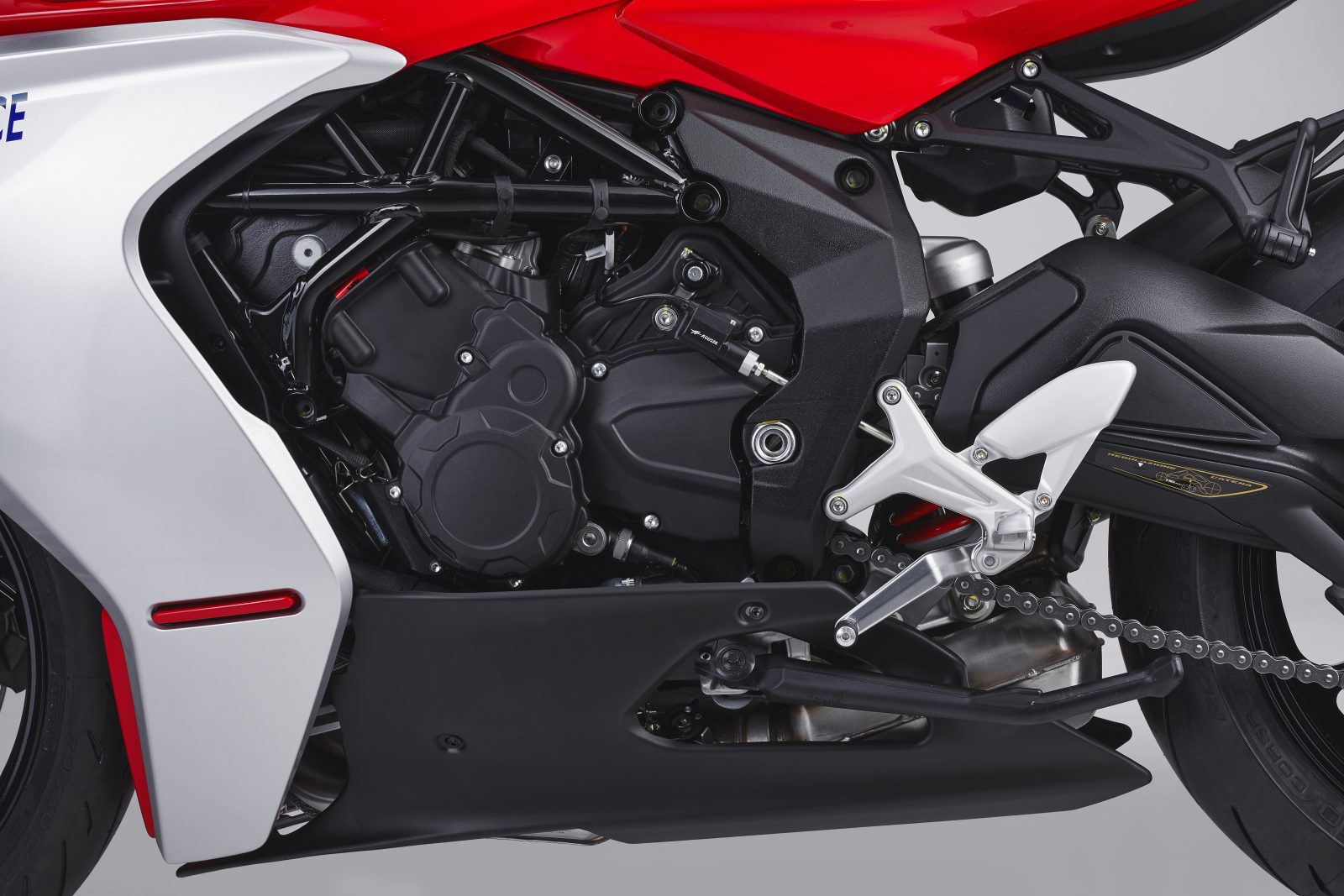
You can’t be lazy with the quickshifter-equipped gearbox and that’s all part of the allure. It engages you, the revs need attention, your gear changes need precision – even the ergonomics forbid you from getting lost in your sunny-Sunday thoughts. It’s all focus, all the time and I like it.
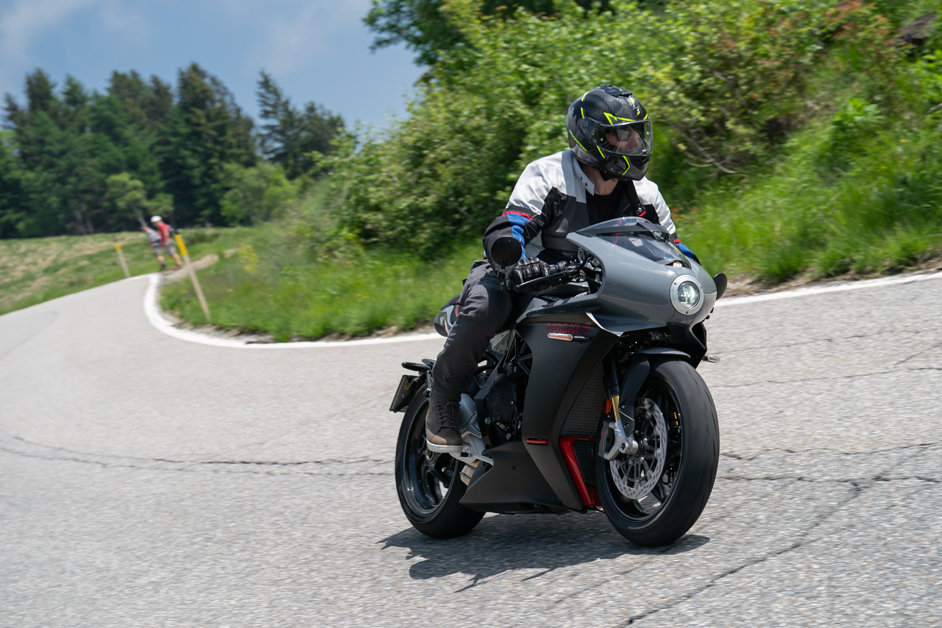
The biggest difference between the Dragster and the Superveloce is in the handling. Although they both run the same chassis and suspension package, the Superveloce feels stiffer and more precise. Where the Dragster is loose and playful, the Superveloce is all business and scalpel like, much like the F3. Tipping the Superveloce in or changing direction happens with absolute ease, although it doesn’t feel quite as planted as the Dragster when it’s on its side.
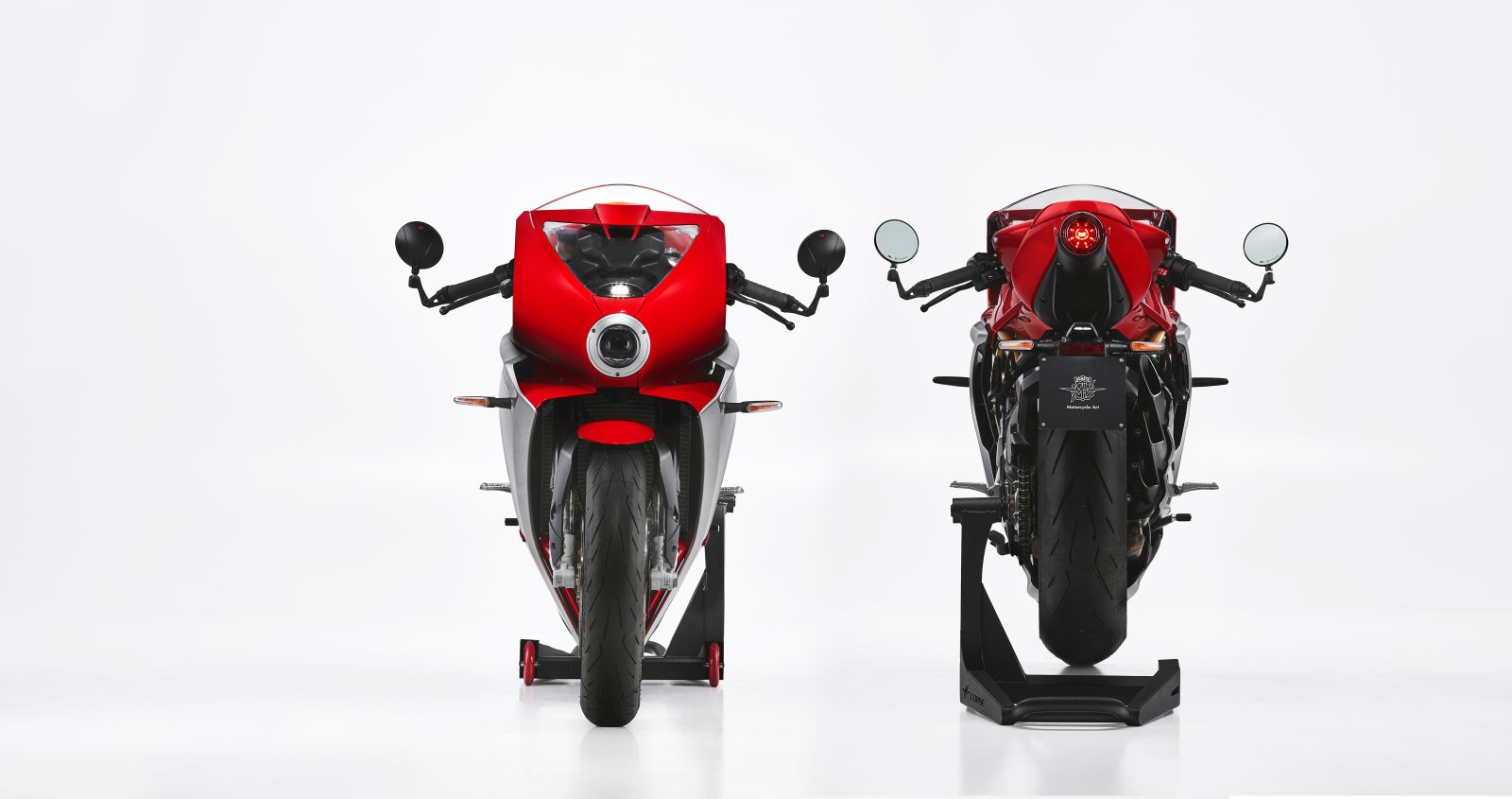
The Superveloce is equipped with an almost identical list of tech as the Dragster with its cornering ABS and traction control, wheelie control, launch control, torque control, power modes, ride modes, cruise control and a TFT dash with Bluetooth connectivity. The Superveloce is 2kg lighter than the Dragster at 173kg (dry) and, as long as you’re smaller than me (most are!), you’ll find its 830mm seat height and skinny waistline pretty easy to get on with.
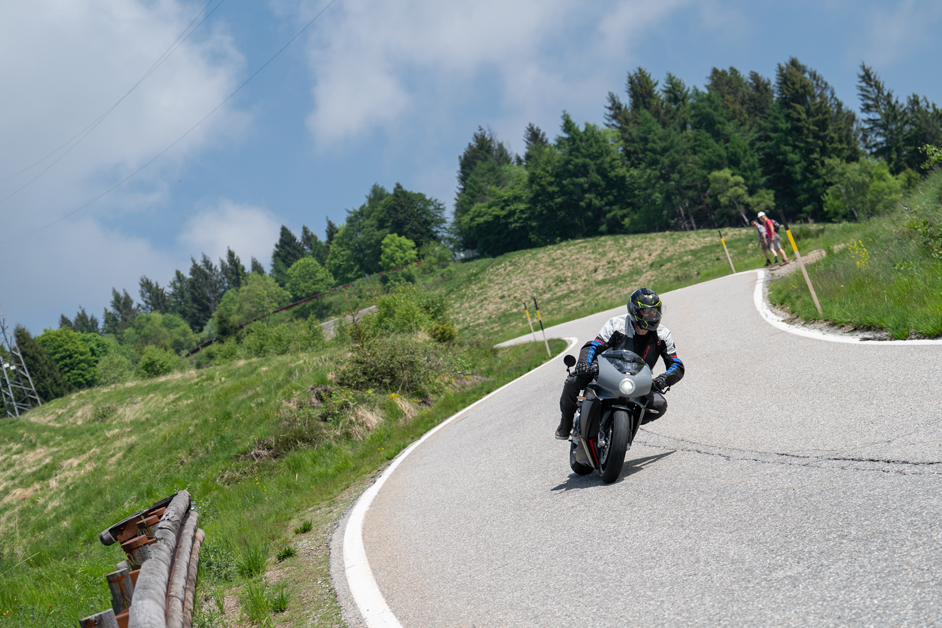
Those svelte proportions are arrested by a handy Brembo brake package, with twin monobloc calipers on the front gripping a set of 320mm discs and working as good as anything else on a premium production motorcycle.
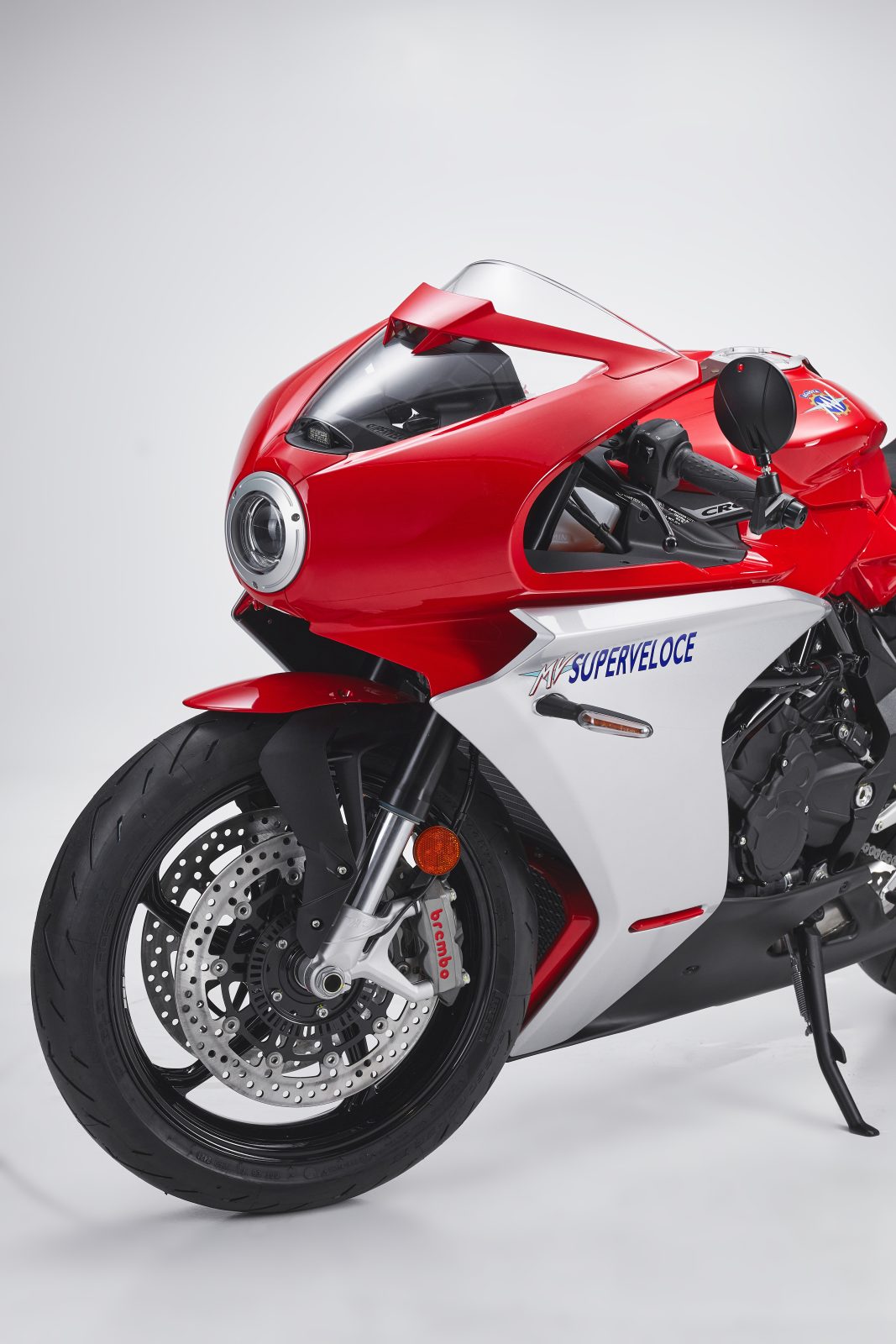
The Superveloce is as much about beautiful build quality, attention to detail and unique high-end looks as it is about out-and-out performance. That’s not to say that the Superveloce doesn’t perform because it really does, in every area and by any benchmark. It’s an impressive balance to achieve.
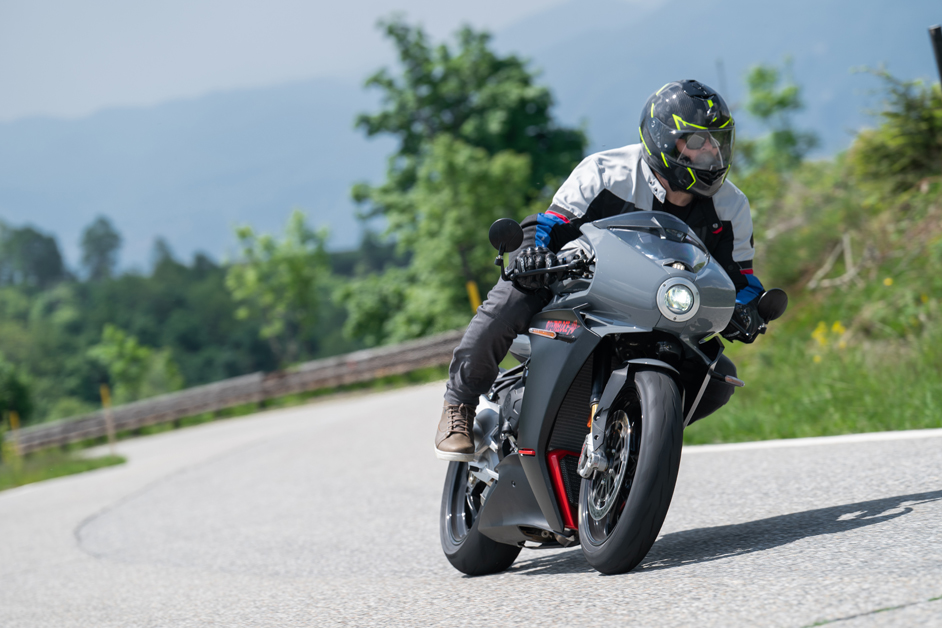
Don’t let the looks fool you, by every measure this pretty Italian is a sportsbike at its core and would be as at home at a trackday as it would be in a loungeroom on display.
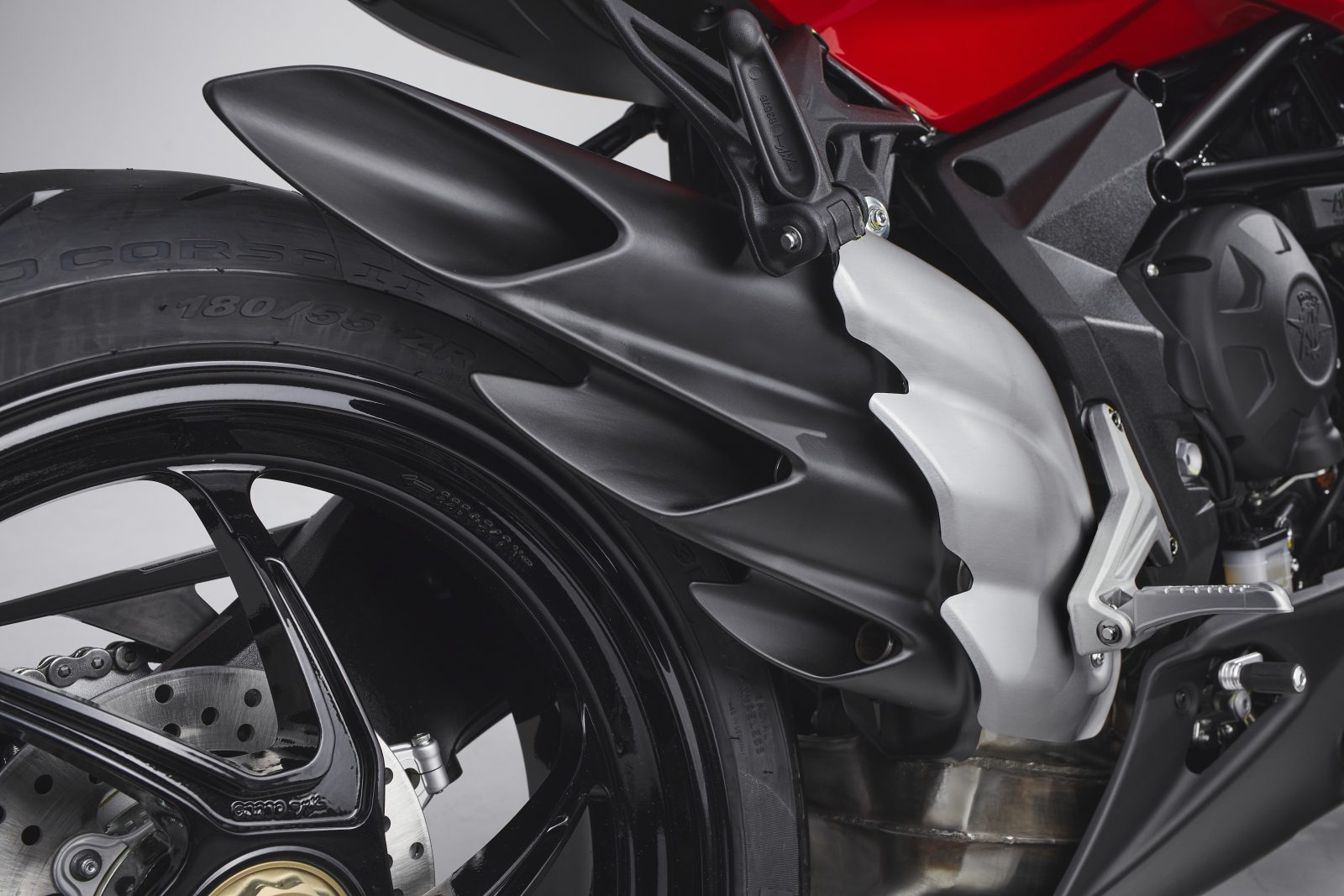
But once again, it’s far from a cheap proposition. But if you fall in love with it – which is very easy to do – you’ll find the $43k. And in return you’ll have something that you look at longingly and ride in anger.
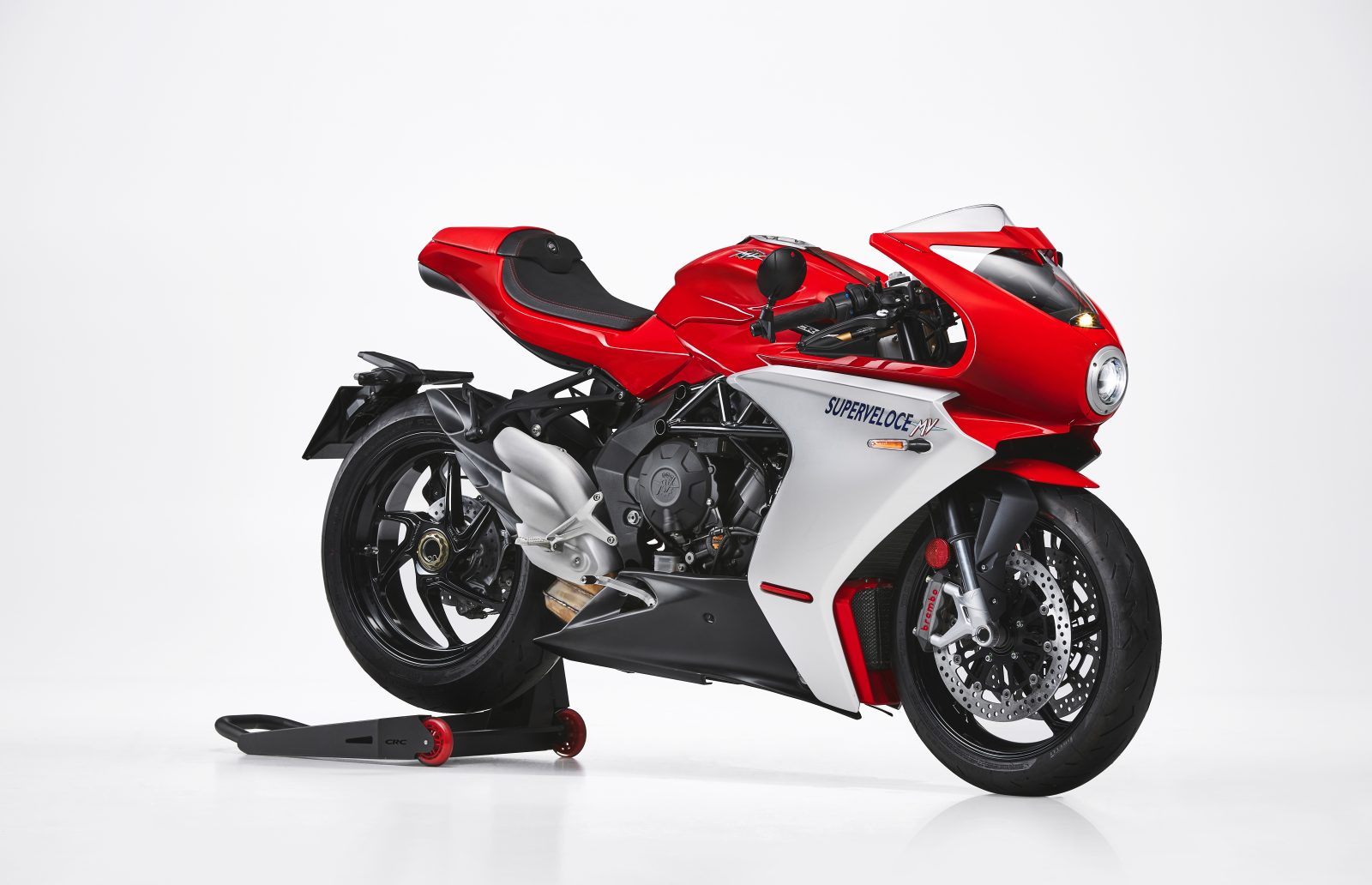
Long-legged beauty – Turismo Veloce Lusso SCS
If distances and glamour are your bag, look at Lusso
MV’s Turismo Veloce Lusso SCS has some work to do. MV’s ability to package excellent performance with lashings of gorgeousness that you simply can’t ignore doesn’t quite work with the Lusso. Not for me, anyway. While the Turismo is no doubt oozing with build quality and Italian craftsmanship, I’m probably not the only person who thinks an upright tourer is never going to win a beauty contest.

The other problem for the Turismo is the level of competition, specifically, Ducati’s Multistrada V4 S. The Ducati is packaged with every conceivable rider aid including radar-equipped gadgets, it has a stonking V4 engine which would demolish the 800, and a host of other high-end features the MV misses out on. In fact, other than the flash SCS clutch and factory-fitted panniers, there’s nothing the Turismo has that the V4 S doesn’t. And the V4 S’s asking price is $7590 less than the $43,990 Turismo Veloce Lusso SCS. And it’s probably best we don’t talk about the Yamaha Tracer 9 GT…

Now that’s out of the way, the 798cc triple engine is a cracker and has been tuned to deliver better midrange performance. In Turismo guide, the 12-valve mill puts out 81kW (110hp) of power at 11,000rpm and 84Nm of torque at 8500rpm, which is 1750rpm earlier than the Dragster. With less power and torque and more weight – 199kg (dry) – the Lusso lacks the excitement of the Dragster. Understandable, this is a sports-tourer after all, but the smaller triple feels a little lost in the Turismo, and I can’t help but think it’d be a better bike with a de-tuned version of MV’s 1000cc four-pot mill.
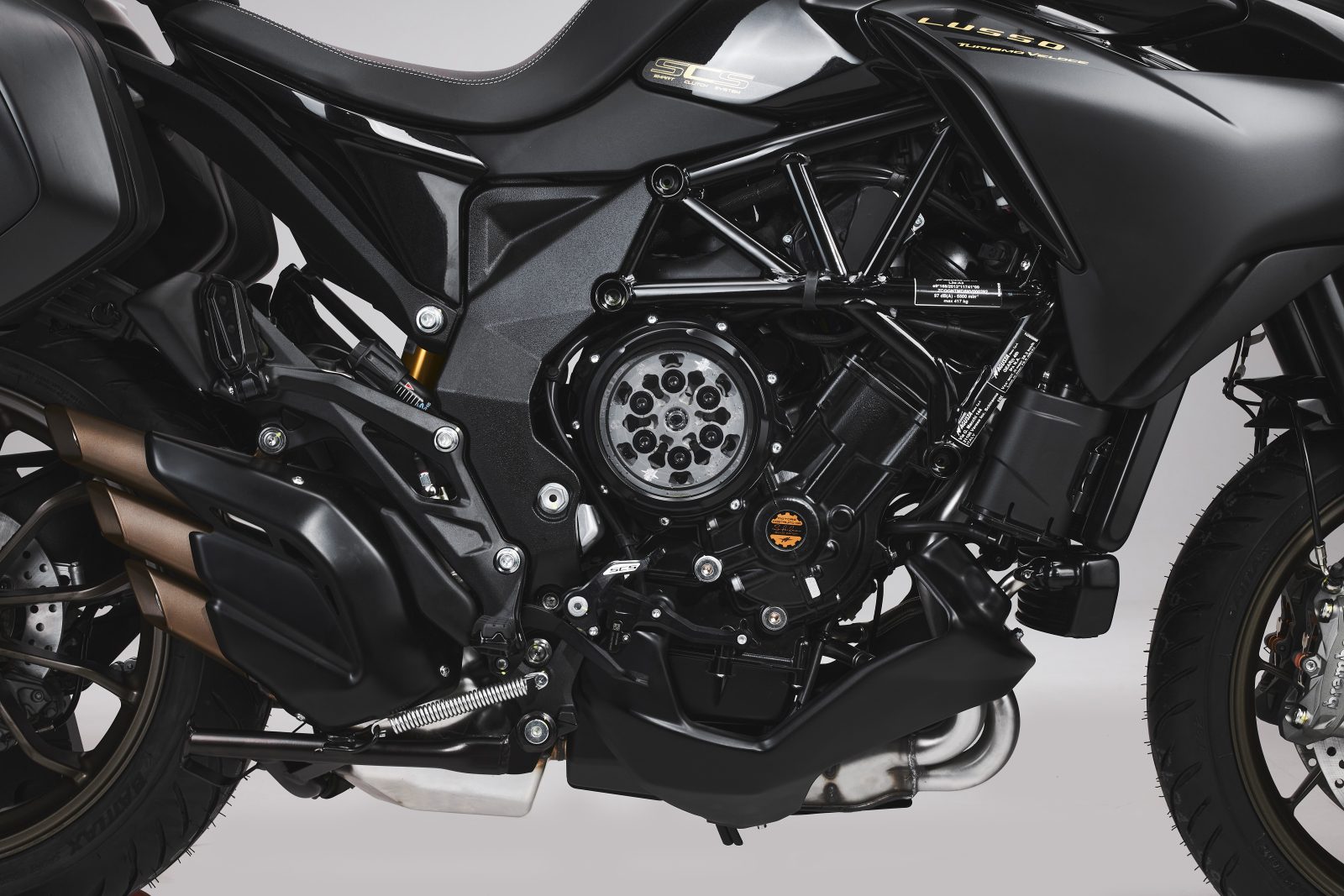
For the convenience the long-legged tourer promises, it uses the SCS system on all three variants except the Rosso. Like its stablemates, the Turismo employs Brembo brakes with four-pot radial front monobloc calipers and a twin piston Brembo on the back making short work of the braking duties.

And keeping the Turismo off the ground is a fully adjustable Sachs semi-active fork and monoshock which provides a very smooth and comfortable ride. I found the standard setup pretty soft for my weight when I was pushing no matter which mode I opted for; it wasn’t as noticeable at more relaxed speeds though. I’m sure lighter riders will have no problem tuning the suspension to their liking through the extensive list of onboard options.
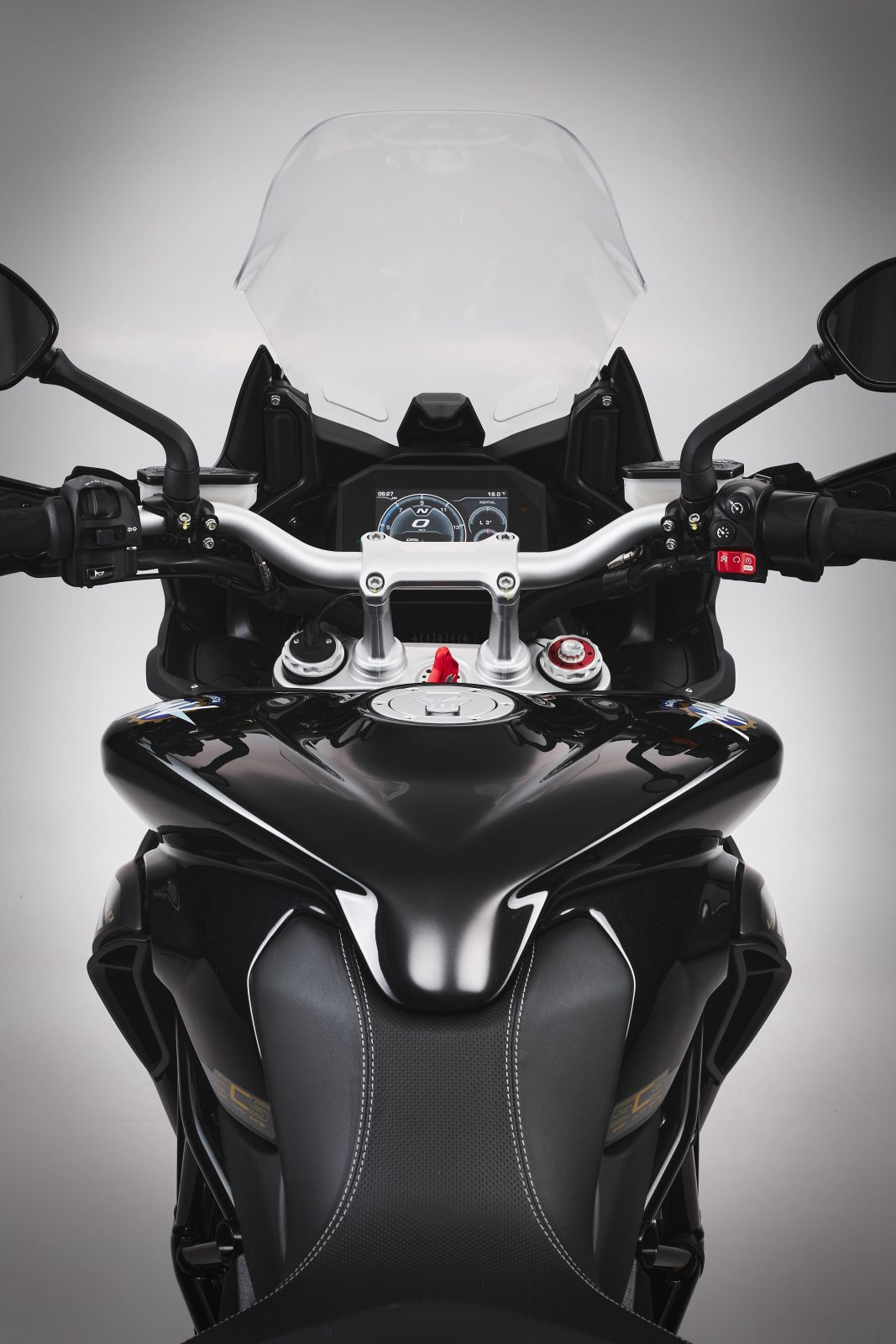
The Turismo is packed with plenty of factory-fitted goodies including the full range of rider aids. There are heated grips, Bluetooth connectivity, cruise control, GPS sensor, an adjustable windscreen and a centrestand for easy loading and chain maintenance. The Turismo Lusso also comes standard with a set of colour-coded panniers, which is rare these days, with a total of 68 litres of space on offer. The Lusso features a 21.5L tank, 830mm seat height and a hydraulically actuated parking brake.

Comfort isn’t an issue with the Lusso, and after my time on both the Brutale and Superveloce I was very keen to stay put on the Turismo. The seat is plush and comfortable, the screen gives excellent protection, and the riding position is relaxed and upright without putting pressure on your tailbone. Pillion accommodation looks promising and the wide alloy ’bar provides plenty of leverage at a comfortable height.
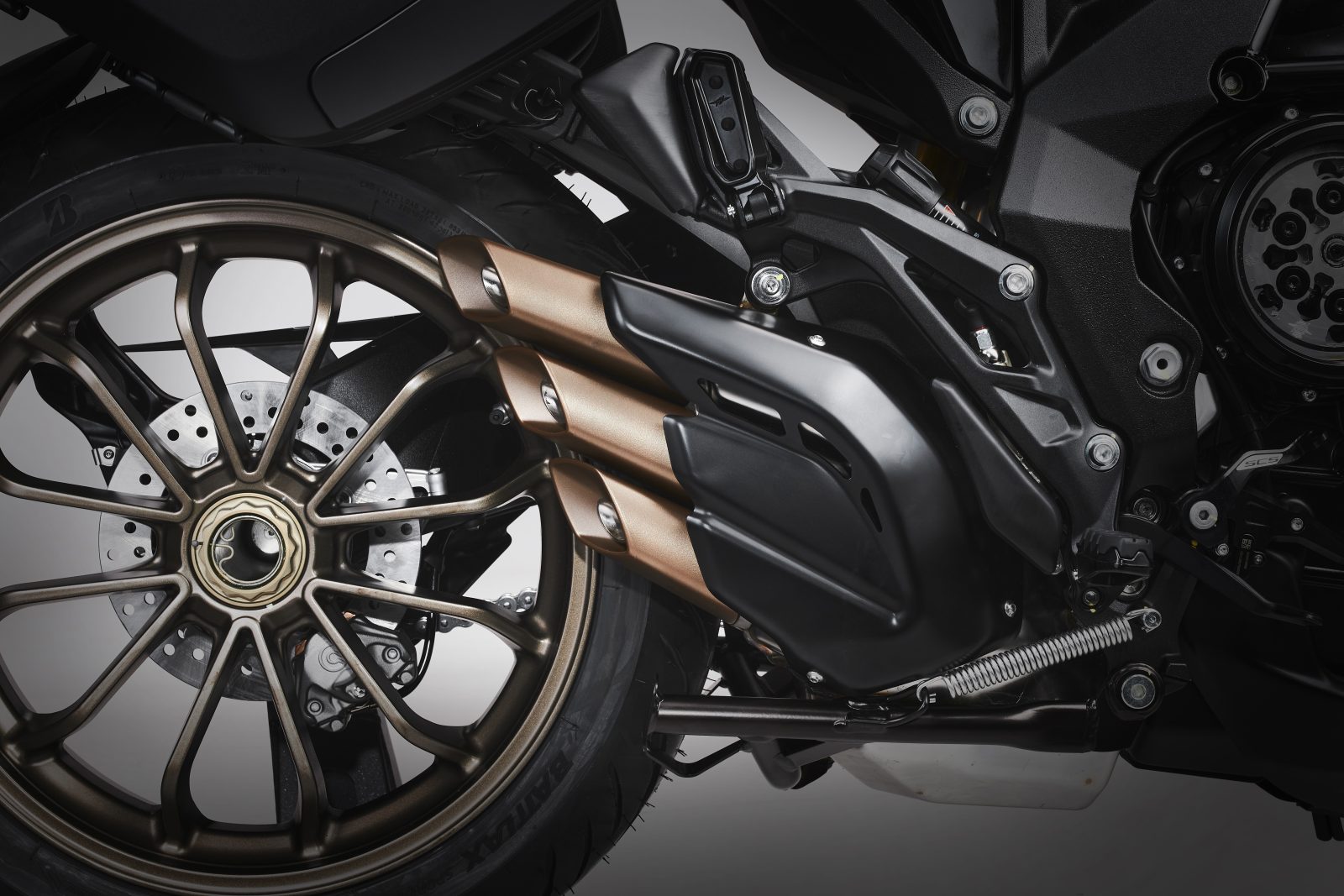
Despite my gripes surrounding price, which have never been more valid as more and more of us feel like we have less and less, the Lusso truly is a great bike. Like all MVs, the Turismo is a bike designed to do a certain job, which it does extremely well while carrying itself with an air of beauty that only MV Agusta can muster.

The Lusso ticks a lot of boxes – it’s just the rest of the range is so damn engaging. Sure, bang for buck against many of its rivals could be improved, but if you’ve got your heart set on an MV you won’t look twice at a Tracer.

TEST: PETE VORST PHOTOGRAPHY MATTIA NEGRINI











